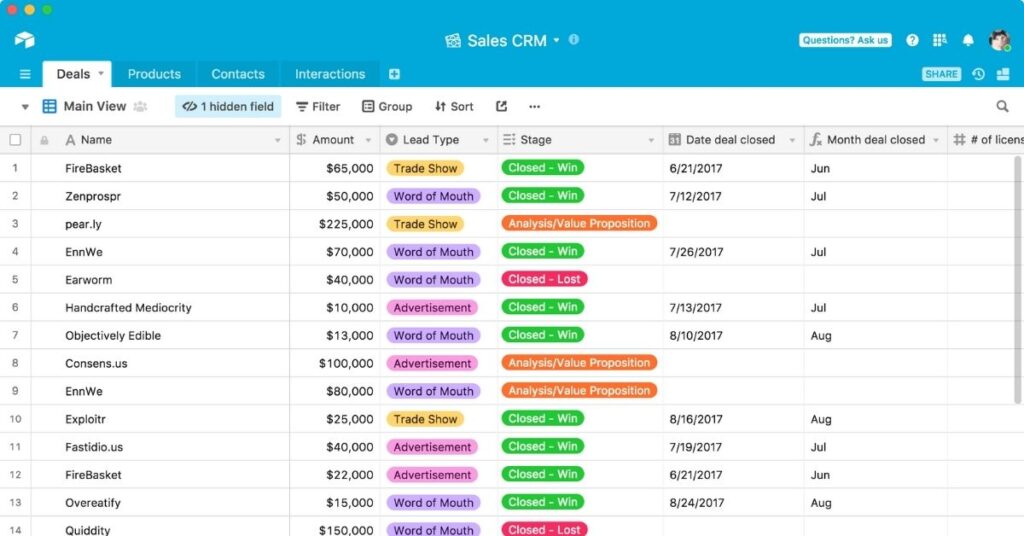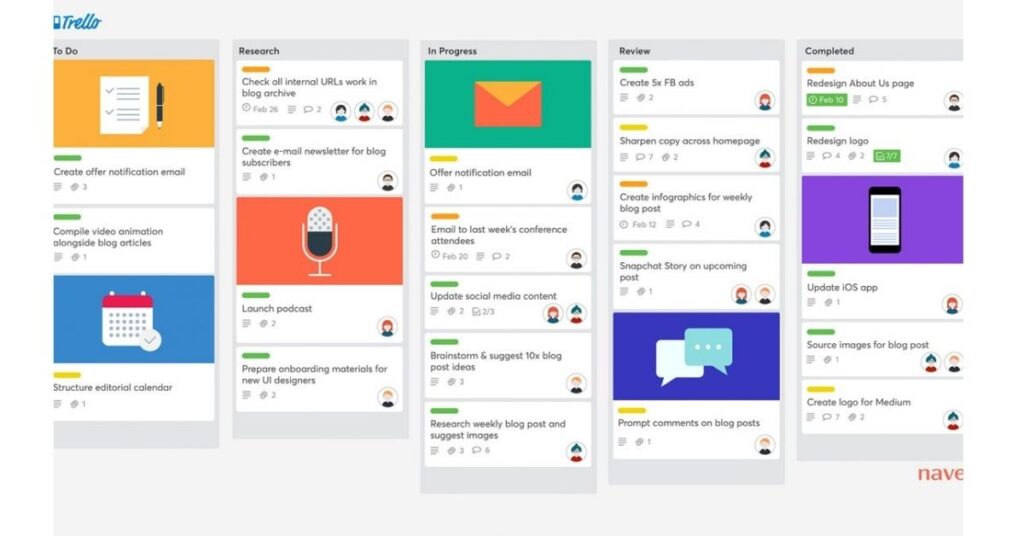The primary difference between Trello and Airtable when it comes to Airtable vs Trello is their focus. Trello is a task management app with a simple but effective Kanban view. Airtable will store a lot of data in a database and then create dynamic views that help you sort everything from simple data to complicated tasks using custom filters and parameters.
Trello is similar to a claw hammer. Airtable is a complete toolkit, that does not mean the comparison is over, because Airtable's broader applications are not inherently good or bad. It all depends on the perspective you view it from and what task you need it to play.
Airtable vs Trello: Let's begin!
Trello is an excellent tool that is both easy to use and effective for its intended use. Airtable allows you to do a lot more, but it takes time to master each of its components and can be intimidating for newcomers.
Platforms for Airtable vs Trello
Let us start with the platforms on which they are available. While there are no differences in the availability of the two apps, it is helpful to know that they are both resident to almost every channel.
Plus, it’s always useful to have a gunshot comparative analysis in an Airtable vs Trello contrast.
- Airtable available platforms:
- Windows
- Mac
- iOS app
- Android app
- Web-based
- Trello available platforms:
- Windows
- Mac
- iOS app
- Android app
- Web-based
The only device on which these applications are not usable is Linux, which is not a big deal since the web-based versions of both are completely functional and simple to use (if you know how to use the app).
Characteristics of Airtable vs Trello
Trello, as described in the emphasis section of this article, has far less features than Airtable. Again, because of the app's more focused nature, this is not a bad thing, and it is a boon in terms of how simple it is to pick up, but it is worth repeating.
The basic edition
Airtable is a database, spreadsheet, and systems engineering app all rolled into one.

The heart of the program is a graph database that can be used to store entries for whatever you want. You can connect data entries together and assemble them into views ranging from grids to galleries, calendars to Kanban boards until you have some data to work with.
This views can then be sorted based on any variables you have specified and filtered to delete any irrelevant data.
Consider a graph that allows you to link your data to generate smart views that you can configure to display almost everything. In a nutshell, it is Airtable.
Trello, on the other hand, is solely focused on becoming a Kanban board where you can build “cards” to switch through different projects.

Though it may seem to be the smaller of the two, Trello's simplistic existence (in comparison to Airtable) is much less imposing and confusing, allowing everyone to see what they need to see nearly instantly with almost no preparation.
Both Trello and Airtable require working with your team by appointing them to unique tasks and pieces of data, monitoring their configuration settings, and monitoring their actions through items like comme
The full rundown
The sheer range of products is too much to dig into without any understanding of what they add up to in the full app, thus the condensed rundown above. However, we’d be doing Airtable and Trello a disservice to ignore their specific differences.
The full overview of each app's features can be found below, thanks to GetApp's list-based correlation.
Integrations
Airtable, as a database, has a greater potential to link with other services, but that does not mean Trello users are left out in the cold.
Google Drive, Dropbox, Evernote, MailChimp, Slack, social networking sites (Facebook, Twitter, etc.) and even Trello all have built-in Airtable integrations. It also comes with an API that you can use to build your own implementation.
Trello, on the other hand, has a smaller (but still powerful) integration catalog. Native integrations include Google Drive, JIRA and Slack, and its API enables users to make their own implementations. It also has access to a massive catalog of applications that Zapier has to sell.
Trello has a marginal advantage over Airtable in terms of Zapier integration, as it has more Trigger (13) and Action (18) options than Airtable (2 and 2), allowing you to be more precise about the integration's different phases and/or effects. Users will also create Zaps to automate any and all repeatable actions, making it easier to automate their activities and boards.
Pricing- Airtable vs Trello
In terms of the volume and form of charging, Airtable and Trello have identical pricing plans (per user per month, with a discount for paying annually).
The only distinction is that Trello's paying package prioritizes extending account permissions, built-in integrations, and file attachment sizes.
Instead, Airtable expands the shortcomings of the free plan first, then adds more functionality and customization to the higher-priced products.
Although both are equally available on their free plans, Trello's cheapest premium package unlocks all of the functionality (with the exception of some maintenance and protection services). Airtable, on the other hand, slowly expands the functionality set across all of its plans.
In other words, the price plans are designed so that the size of your team and the scope of your requirements determine which strategy is best for you.

Trello's price strategies reflect its closer emphasis as a job management app, which is better geared to smaller teams. Trello's free plan and $10/user/month paid plan have the majority of the appeal, with the additional protection a large reserved for the paid plan.
Airtable, whereas, gains from the broader feature set and usage cases. While the free and lowest priced plans offer lots of flexibility, most medium-sized teams would choose to upgrade to the more premium plans to get access to all of the services.

Conclusion:
Airtable recognizes that bigger teams are more likely to require its robust database and project management services, which is not inherently a negative thing. In brief, if you’re looking for a platform to help you handle your efforts and get coordinated, give Trello a try. If you have already tried Trello or if you are part of a team that needs a database to store data, Airtable is well worth your time – please be careful while learning how to use it. This is all about Airtable vs Trello.
